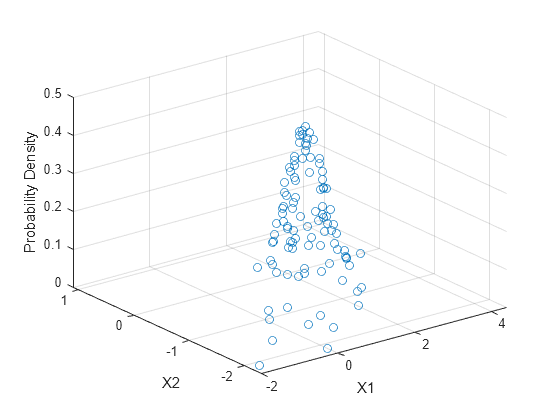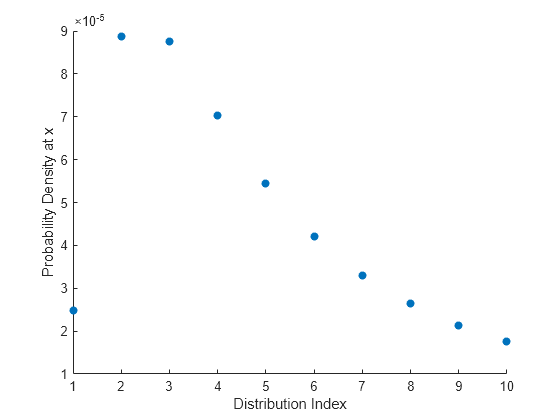mvnpdf
Multivariate normal probability density function
Description
y = mvnpdf(X)1 vector
y containing the probability density function (pdf) values
for the d-dimensional multivariate normal distribution with zero
mean and identity covariance matrix, evaluated at each row of the
n-by-d matrix X. For
more information, see Multivariate Normal Distribution.
Examples
Input Arguments
Output Arguments
More About
Tips
In the one-dimensional case,
Sigmais the variance, not the standard deviation. For example,mvnpdf(1,0,4)is the same asnormpdf(1,0,2), where4is the variance and2is the standard deviation.
References
[1] Kotz, S., N. Balakrishnan, and N. L. Johnson. Continuous Multivariate Distributions: Volume 1: Models and Applications. 2nd ed. New York: John Wiley & Sons, Inc., 2000.
Extended Capabilities
Version History
Introduced before R2006a

